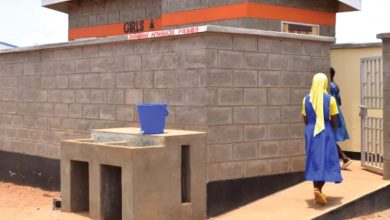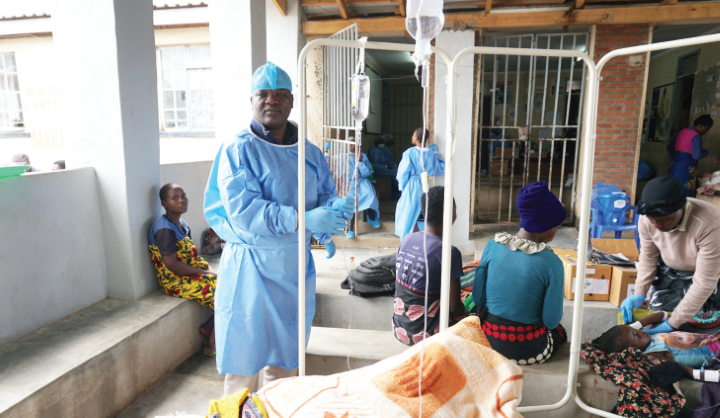Killing HIV and Aids?
In Malawi, just three percent of people with HIV get the treatment they need. But drugs are free, access to them is improving and new efforts give reason to hope for the better, writes Ephraim Nyondo.
By December 2010, Elufe Peter from Thyolo who was diagnosed with HIV and Aids in 2005 had completely lost hope in life.
Ignored by her husband, she fled Blantyre with her 10-year-old daughter and settled in Mpenda I Village, Traditional Authority (TA) Tomasi in Thyolo, to await her death.Â
She was always bedridden and her body had withered into twigs. Death was around corner.
But as she was waiting to die, she wobbled to a nearby Tomasi Health Centre in her village. They tested her CD4 count and by January 2011, she joined almost 300 000 thousand HIV positive Malawians taking antiretroviral drugs (ARVs).
It was at the health centre where she met friends who were in support groups for HIV-positive villagers set up by Coalition of Women Living with HIV and Aids (COWLHA), a Malawian civil society organisation established to create a united voice for women and girls living with the virus in addressing the challenges affecting them.
“Membership of COWLHA constitutes women and girls living with the virus. We are all over Malawi with different chapters,†says Steve Iphani, its projects officer.
Since its inception in 2006, COWLHA has implemented more projects dealing with gender- based violence as well as harmful practices in relation to HIV.
“We are a membership organisation. Individual women living with HIV organise themselves into groups that are formed under T/As then district chapters,†he adds.
In Thyolo alone, there are almost 4 000 HIV positive women organised in 72 support groups drawn from 13 T/As. Peter belongs to Tomasi Village support group
“I could hardly swallow water by the time I got the first dose of ARV medicine in January last year,†she confesses.
But when I interviewed her at Bvumbwe Health Centre, I couldn’t tell she had ever been sick.
“The COWLHA support groups,†she whispers, “are behind my healing, my revert to life. It’s a social club where we learn to accept who we are; we talk, we laugh and we share anxieties. We have a chance to vent what loneliness hides inside.â€
They encourage each other to be faithful in taking medicine. They remind each other of the importance of condom use, especially those in marriage. They share stories of stigma and decide the course.
According to Maria Zuze, COWLA’S district coordinator for Thyolo, whenever an HIV positive woman suffers stigma or abuse at her respective home, the support groups takes up the matter.
“We either go to the victim’s home to talk with the family and counsel them. If that fails, we report to the chief. There is a law across the district that if you wrong an HIV positive woman, you part with three chickens. One goes to the chief, the two to the victim,†she says.
Last year, Malawi Network of People Living with HIV and Aids (MANET+) conducted a study on the prevalence of stigma against those living with the virus. The study revealed that stigma is still prevalent, women and children being the worst victims.
“The scale of stigma is dropping here. People are slowly seeing the possibilities of positive living and have a full and strong life. Even at my home or at social gatherings I attend, I really feel free. I am treated like anybody,†says Peter.
Her weight has shot up and her energy is high. To realise her childhood dream of becoming a school teacher and later, owning a school, Peter is now in Form Three at Mpenda Day Secondary School.
At home, she is running a nursery school and she also sells fritters to generate income.
“I can fetch water, wash clothes; I can do everything. My daughter is glad to see me well again. So too is my mother. She always looks at me with smiles. I will soon own a big education facility,” she says while smiling.
It would be rush to call Elufe Peter’s story the new face of HIV and Aids in Malawi. The disease killed thousands last year, and it could kill more thousands with each passing year. Even worse, with 50 000 people contracting the virus every year, the epidemic remains a scar on the conscious of the country’s health care. The treatments that have made HIV survivable in wealthier parts of the world still reach fewer than three percent of Malawians who need them.
Yet mass salvation is no longer a fool’s dream. The cost of ARVs is now free. The Bush administration and the Geneva-based Global Fund to Fight Aids, tuberculosis and malaria are financing large international treatment initiatives.
Initially, the World Health Organisation (WHO) is orchestrating a global effort to get everyone diagnosed with the virus onto ARVs-an ambition on the scale of smallpox eradication.
But what will it take to make this hope a reality? Raising more money and buying drugs are only first steps. But Iphani, argues, there is more to that.
“The greater challenge is to mobilise millions of people to seek out testing and treatment, and to build village support groups that should demystify ill- perceptions of those living positively,†he says.
With access to treatment, millions of those likely to lose their lives could soon recover as dramatically as Peter-and their salvation could revive farms, schools and economies as well as families.
Successful antiretroviral therapy expands the pool of infected people simply by keeping people alive. Unless the survivors can reduce transmission, the epidemic will grow until the demand for treatment is unmanageable.





